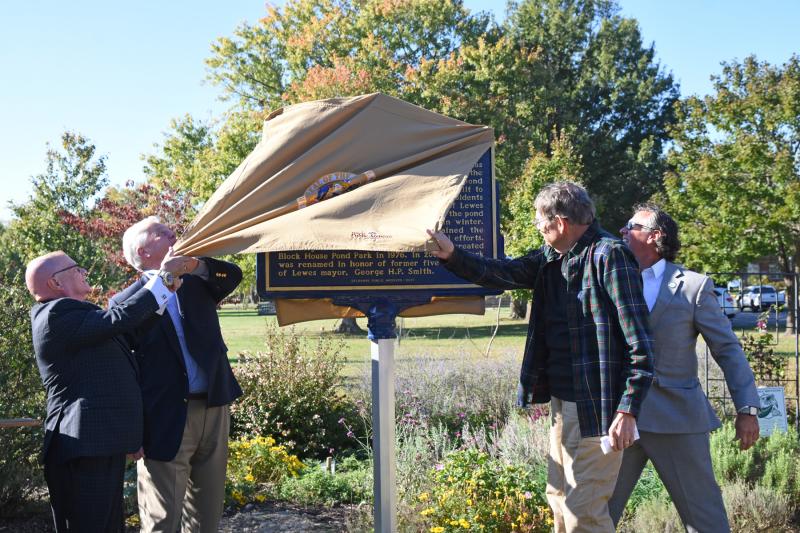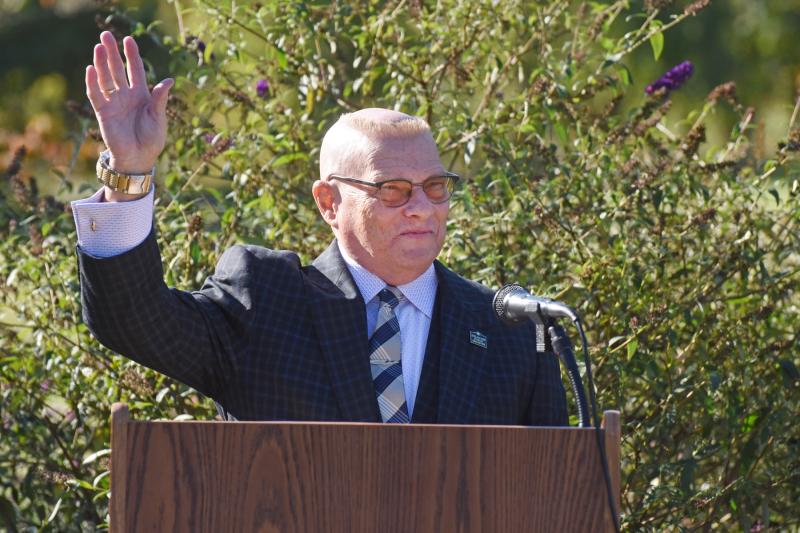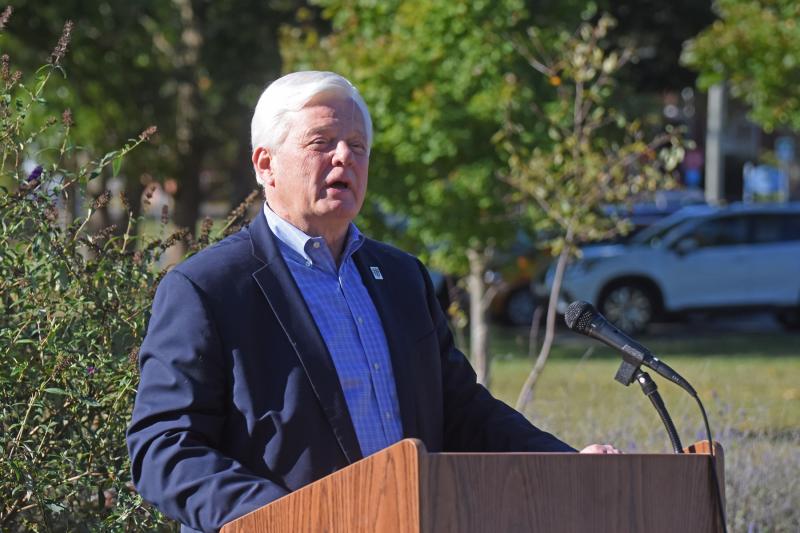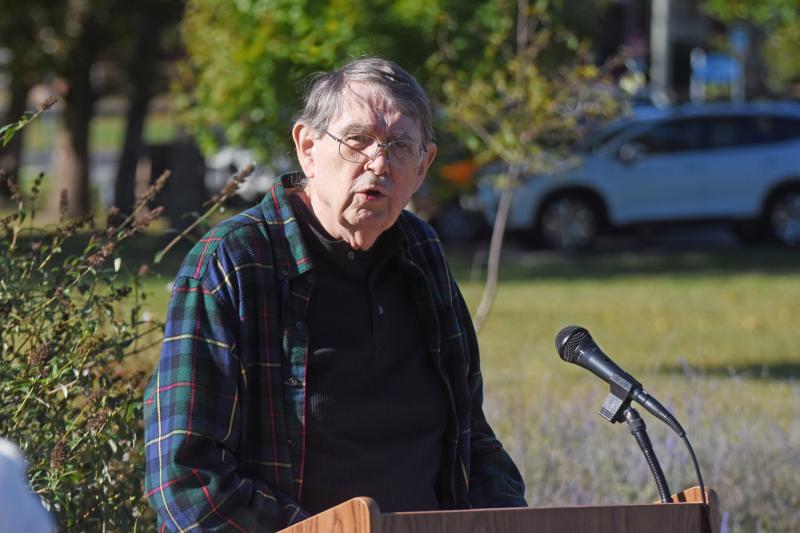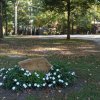Blockhouse Pond historic marker unveiled in Lewes
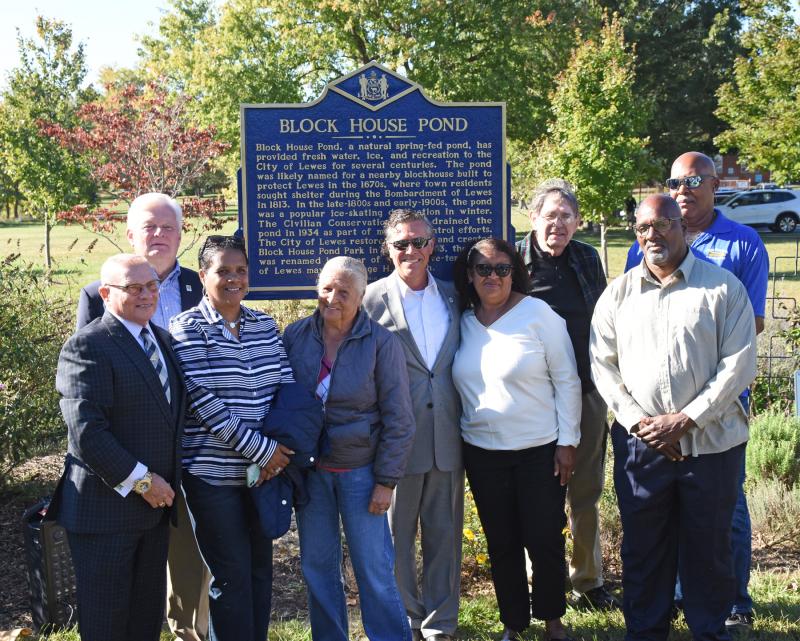
During the bombardment of Lewes in 1813, Blockhouse Pond was considered an inland refuge for residents who lived along the shoreline.
In the years since, the small pond in George H.P. Smith Park near Beebe Healthcare has provided refuge for residents, visitors, hospital staff, patients and others who seek a peaceful respite.
The pond’s place in history is now officially recognized on a historic marker that was unveiled during a short ceremony Oct. 20.
Sponsored by Rep. Steve Smyk, R-Milton, the marker highlights the pond’s significance during the War of 1812 and the years since while also acknowledging the role former Mayor George H.P. Smith played in preserving the city’s heritage and history.
“This is a very important part of the community and one that I think has gone unappreciated for so many years, and one that I am very happy we are now recognizing with this marker,” said Mayor Ted Becker.
Becker noted the pond was drained by the Civilian Conservation Corps in 1934 as part of an effort to control mosquitoes. The city restored the pond and created Blockhouse Pond Park in 1976.
For some time, the property was eyed for housing, but city council in the 1960s decided to keep it as open space.
“Can you imagine this park if it had been townhouses or if it had been freestanding homes just sitting here?” Becker asked rhetorically. “And what a loss it would’ve been to this community.”
Becker said city council made another smart decision in 2004, when it renamed the park in honor of George H.P. Smith.
“George was quite a visionary,” Becker said. “We enjoy many things today that we would not have been able to enjoy if George wasn’t part of it, not the least of which is the Canalfront Park. It was George’s willingness to step up and believe that Canalfront Park could be a reality.”
In preparation for the Oct. 20 event, Smyk said he called friends who grew up in Lewes to get a sense of what the park meant to the community.
“They had a lot of positive things to say,” he said. “A lot of memories of just running around this pond. It was a beautiful spot of unencumbered exercise.”
The historical marker program was initiated in 1931. Over the last 90 years, the state has positioned more than 670 markers throughout Delaware to commemorate houses of worship, historic buildings, notable Delawareans and historic locations. Smyk noted that markers are not just randomly selected by state officials; instead, they require efforts from private citizens to preserve and tell the history of the First State.
Nick Roth is the news editor. He has been with the Cape Gazette since 2012, previously covering town beats in Milton and Lewes. In addition to serving on the editorial board and handling page layout, Nick is responsible for the weekly Delaware History in Photographs feature and enjoys writing stories about the Cape Region’s history. Prior to the Cape Gazette, Nick worked for the Delmarva Media Group, including the Delaware Wave, Delaware Coast Press and Salisbury Daily Times. He also contributed to The News Journal. Originally from Boyertown, Pa., Nick attended Shippensburg University in central Pennsylvania, graduating in 2007 with a bachelor’s degree in journalism. He’s won several MDDC awards during his career for both writing and photography. In his free time, he enjoys golfing, going to the beach with his family and cheering for Philadelphia sports teams.














